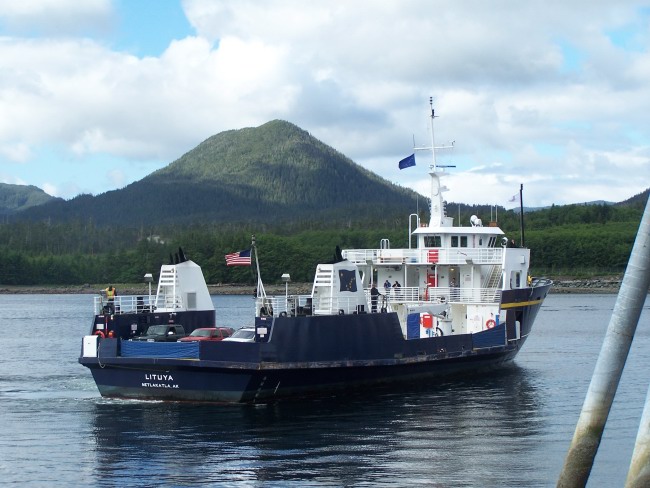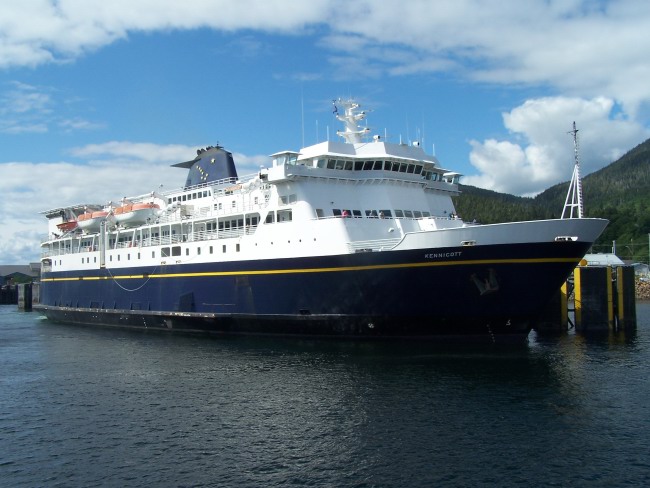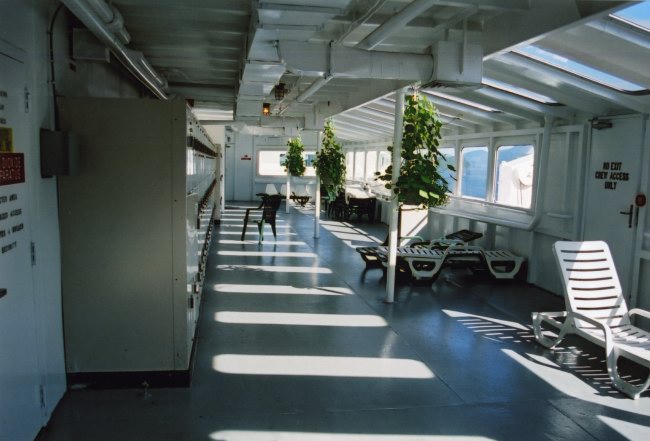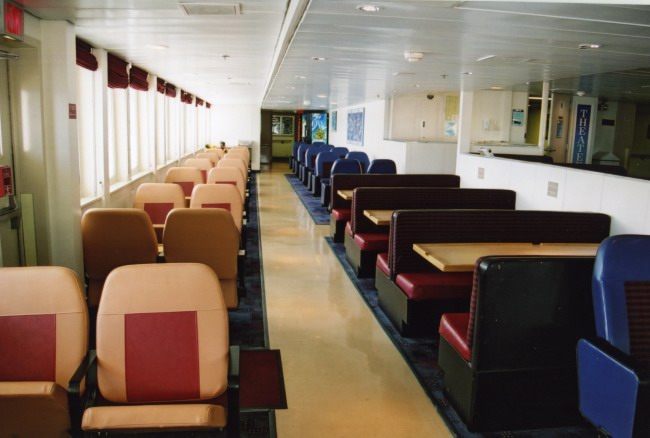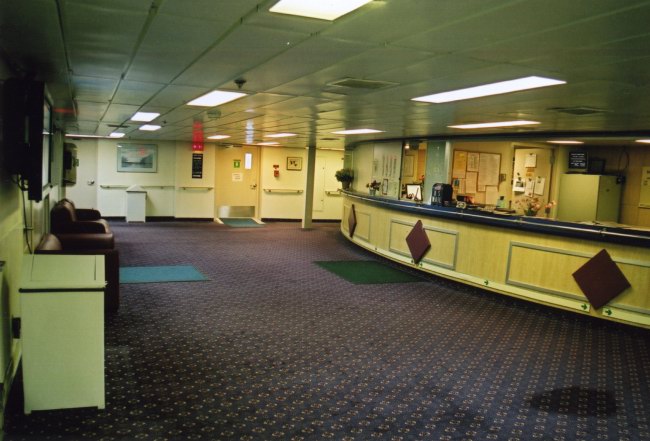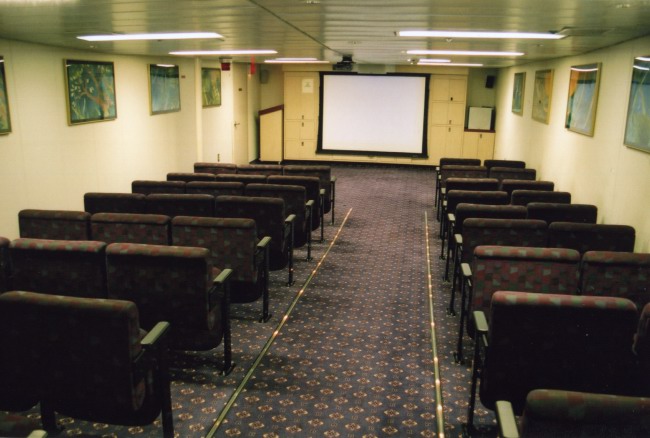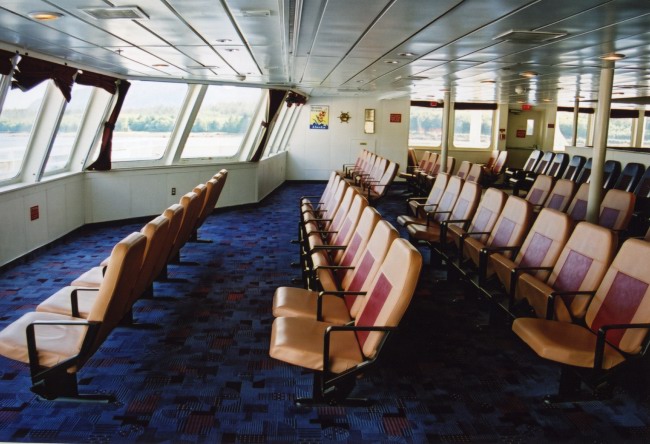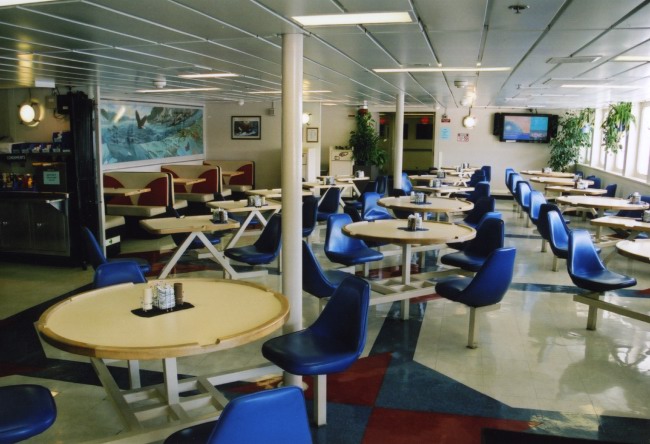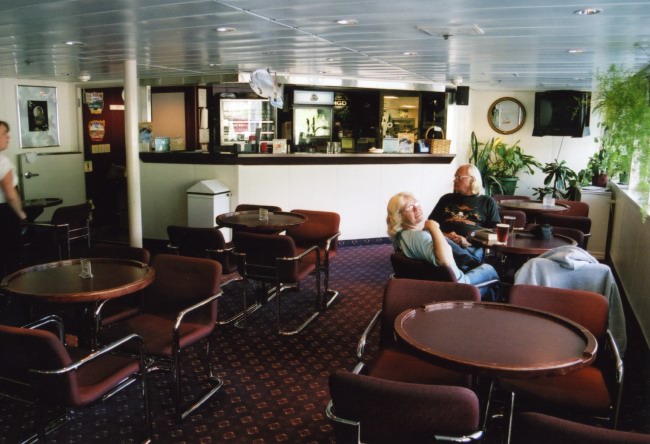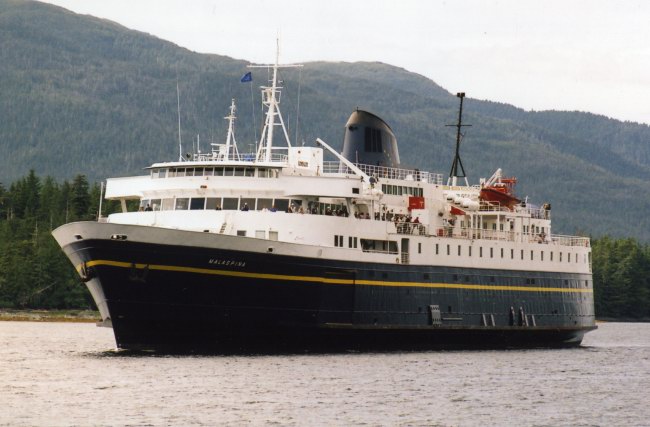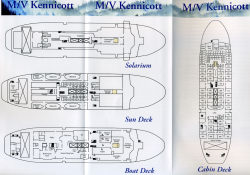As the Lituya approached Ketchikan on her return sailing, we passed first the South-bound Malaspina and then the arriving Kennicott, which was several hours earlier than her scheduled time. As the Kennicott wasn’t due to depart again until 22:00, we asked at the terminal whether a visit would be possible – fully expecting to be turned away. However, a quick phone-call later, and we were walking down to the car deck, where we were signed in, and then just told to show ourselves around and make sure we got off before departure! The Kennicott’s ungainly appearance belies her dual role as an emergency command vessel, but onboard, there is little to indicate this to passengers. Her saloon accommodation is concentrated on one deck, with a U-shaped observation lounge forward, within which a self-contained cinema is located. Aft of the forward hall, with its small gift-shop, a central walkway leads amidships to the cafeteria entrance, passing the cosy bar to port. The cafeteria consists of a free-flow servery, with seating areas to port – filled with fixed, plastic seating. Aft of the galley, and accessible only via the external side promenades, is a narrow stern observation lounge. Having photographed the vessel, we returned to the bar, where the barmaid chatted away as we enjoyed several Alaskan pale ales – an excellent discovery of the trip!
Our unscheduled visit to the Kennicott – including the leisurely stay in the bar - epitomised the wonderfully relaxed atmosphere within the Alaska Marine Highway, which embodies all the positive things that are synonymous with pre-9/11 America. Across the board, the crews are very welcoming, each proud of their role and the Company, and keen to ensure each passenger has everything they need or want for their Alaskan trip. Symptomatic of the current climate, large security notices are ever present in the AMHS ports, worryingly announcing “Security Level – Normal: Significant Risk of Attack’. Happily, however, despite events elsewhere, it is hard to fleet threatened in the vast Alaskan coastline – and the service is a world-away from the majority of modern-day America, such notices sitting incongruously in the wooden terminals of the tiny ports served. [Text continues on next page] |
